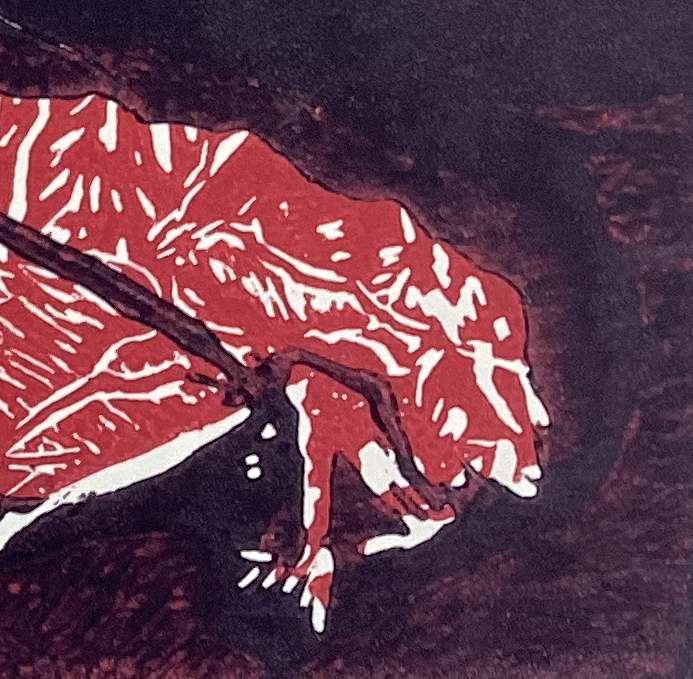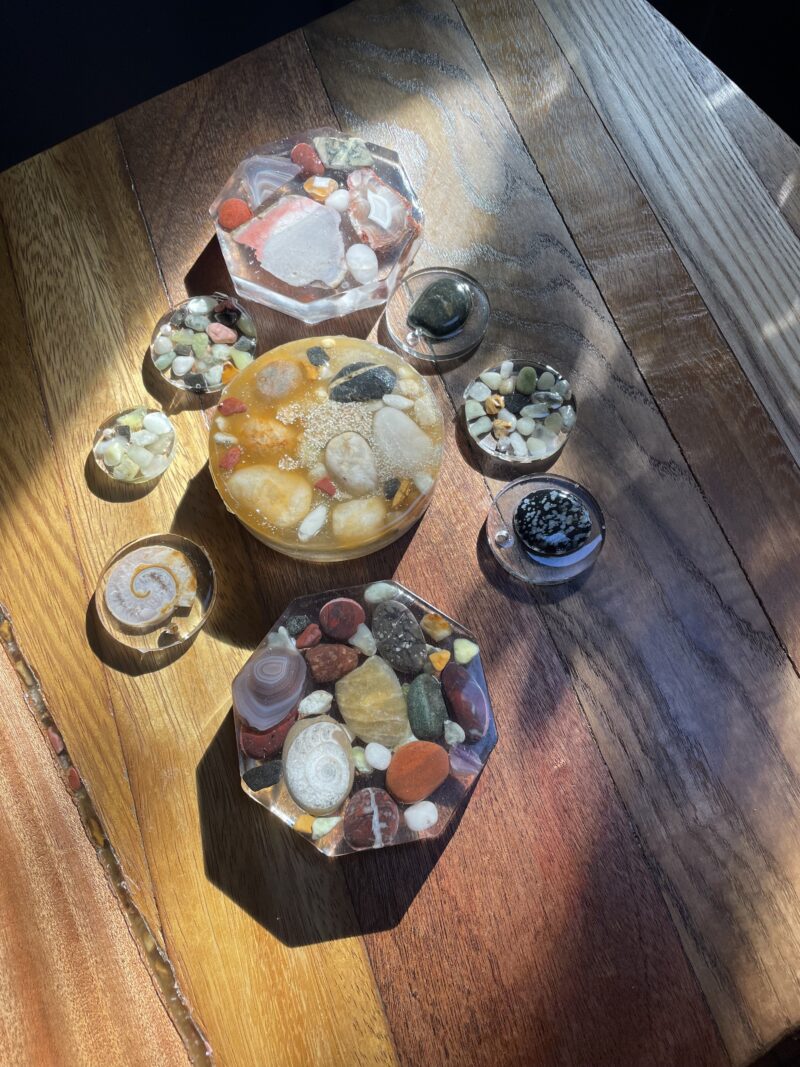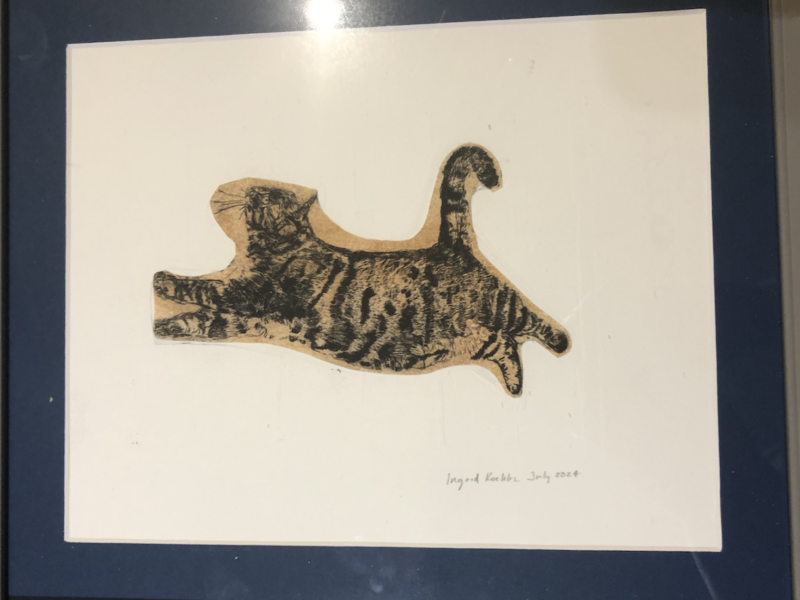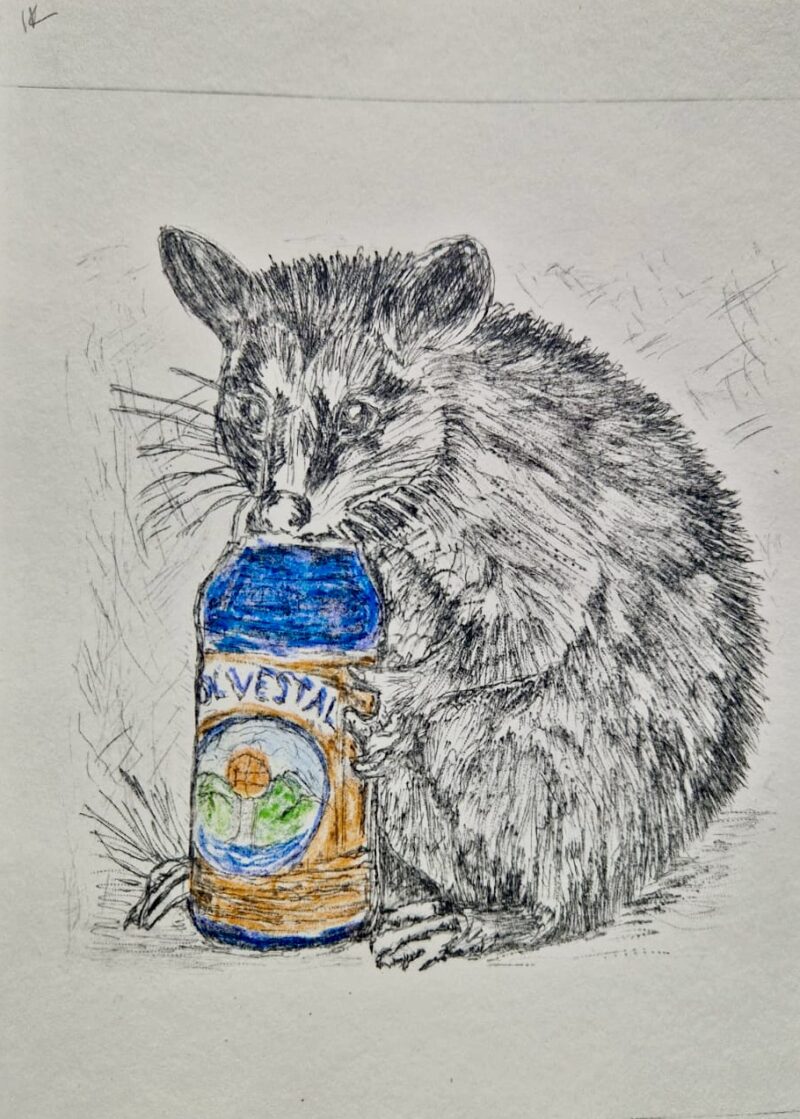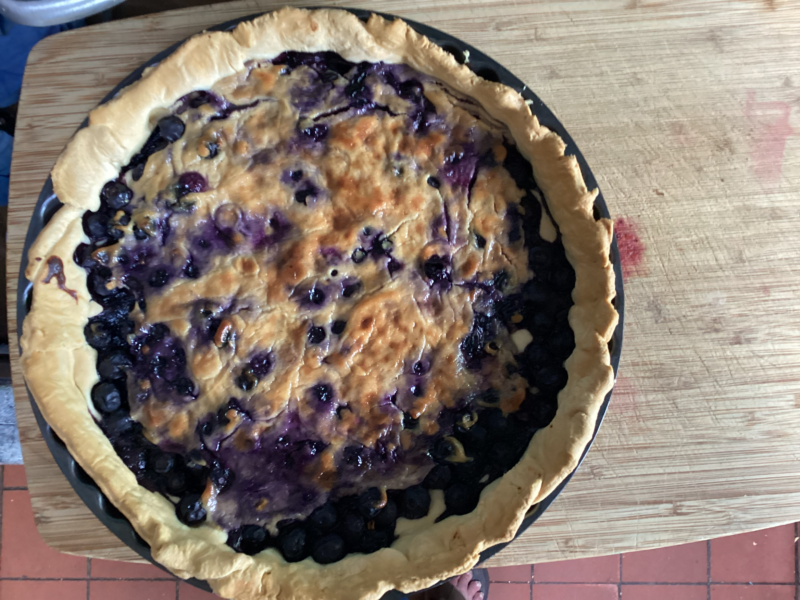When you think about AI, do you wonder if you should welcome your new robot overlords or if you should steer clear? Stories about artificial intelligence and the artist have largely been focused on how the automated learning process rips off creators to generate images or music or writing that’s not quite as good, not quite as human as real art.
I’ve been experimenting with AI for my day job, but I’ve also been using it for my passion projects, too. This week, I used AI to help me with a lino cut. And when chatting about inspiration with other students in my printing class, I asked if anyone else used AI to support their artistic process and the answer was largely no. So, I said I would share what I’d done and so here we are. But first, like an online recipe for meatloaf, you need to wade through a lot of background text – usually some kind of sentimental inspiration. If you just want the ingredients and instructions, scroll to end. Your loss.
The original computer generated inspiration for this work
My partner is a palaeontologist. (OK, yes it is kind of cool. And no he doesn’t work on dinosaurs.) He specialises in digitally reconstructing ocean critters from a long time ago and not so far away. These animals are over 400 million years old and what makes them remarkable is their preservation. Most of the time when things die they rot and fade away, if we’re lucky we might see a shadow of them or at least their harder bits, often somewhat or entirely squished, captured in the rock. Any softer parts of the animal are not even a whisper of a memory. But these sea squigglies were preserved in three dimensions before too much rot set in maintaining amazing structural detail. And then they waited and waited for an intrepid scientist to find them, slice them into tiny, tiny bits (taking a photo after each slice) and then reconstruct them as 3D images allowing us to get a glimpse at these long extinct animals.
I haven’t done much detailed work in lino and in preparation for another work, I decided to try my hand at one of Mark’s critters. I happened to have a printed image of Cascolus ravitis and I have a sweet and funny memory of the thing from when we first started dating.
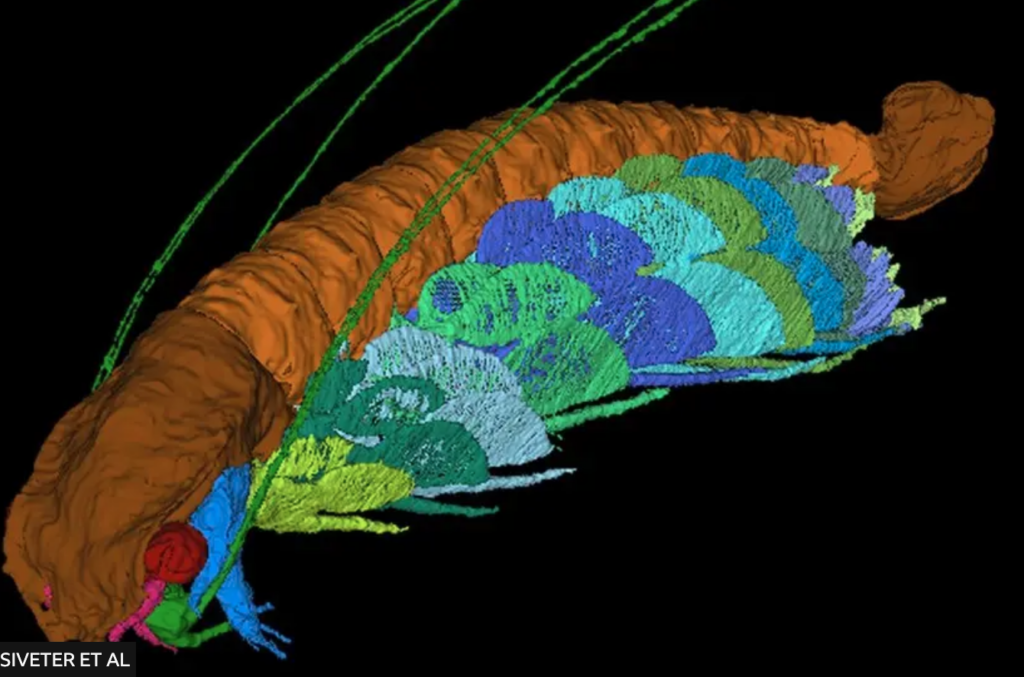
Show and tell
Mark had just moved into a new flat and was still missing a few basic household items. I was on my way over when I stopped into a shop and happened to see one of those needed essentials, a can opener. I bought it. I was really pleased with myself and my thoughtfulness as a girlfriend, so when I came in I said “I have a surprise to show you.” He said he did, too. Who should go first? He did.
He had received a beautiful glass paperweight with a ghostly image of Cascolus etched within from Sir David Attenborough – the man himself – along with a handwritten note thanking Mark for naming the fossil after him. And I had… a can opener. (I should have insisted on going first.)
And if you’re wondering how Cascolus links to Attenborough, it’s all in the Latin. The genus name Cascolus comes from the Latin roots for “dwelling” and “stronghold”—a nod to Attenborough’s family name—and ravitis is an elaborate portmanteau combining life (vita) and messenger (ravis) – and Sir David is certainly one of our most beloved message-carriers or story tellers for life on earth.
So, poetic and scientific, sweet and funny…nothing says romance like extinct marine fauna.
The process and how I used AI
I started carving on “Pretty”, the team’s working name for the fossil, when I decided – on a whim – to do a two plate print. Hard lesson learned: a successful two-plate print is rarely the result of rashness. My carved blocks did not align.
I knew I’d have a job trying to register (line up) the printing plates and paper and it was a job that would require measuring. This is not my bag, so I handed that task to Mark. But to make the job quicker. I asked ChatGPT to come up with different registration methods and their advantages and drawbacks. I chose one and then asked it to come up with step by step instructions – and we made a registration jig together.
It helped, but the plates were still off a little. Don’t get me wrong, it’s still interesting, but not what I was going for. I’ll re-work the parts of the image I don’t like and try again.
I was struggling to decide which colours I wanted to use and I knew that since I would not be waiting for the first print to dry before printing the second plate, I wanted to make sure that the resulting mix of colours would be harmonious. Since Pretty is an arthropod kind of like a shrimp (but too tiny to batter and fry) I wanted to play up the shrimpiness. I described the project and asked for suggestions of two colours to use – but it was a long paragraph of the kind of effect I wanted to achieve. It came up with five different suggestions, all of them intriguing. And I then asked for colour mixing suggestions, given the range of inks in the studio.
I started with inspiration from this suggestion, the one that challenged me the most.
🌄 2. Sedimentary Sunset
- Burnt Sienna: Mix Red + Yellow Ochre with a dash of Blue to deepen it.
- Dusky Violet/Plum: Mix Red + Blue with slightly more Red, then add a bit of extender or White to grey it down.
- Optional: Add a hint of Yellow to mute further into plum.
But I diverged from it quite a bit, experimenting with adding more extender, more ochre or more white with each print run. There were other suggestions that I will try.
What was helpful
Of course getting a summary of instructions for registration helped, but the colour suggestions really freed me up to start blobbing out some ink and mixing up colours. I’ve had some colour theory, but my formal art instruction is pretty minimal. Taking what I’d learned formally and informally, it was an excellent reminder and a shortcut to refreshing my knowledge and meant I could use valuable studio time to getting on with printing. But all the cutting, mixing and printing was me.
Was using AI cheating? Less than using a source image, I’d say.
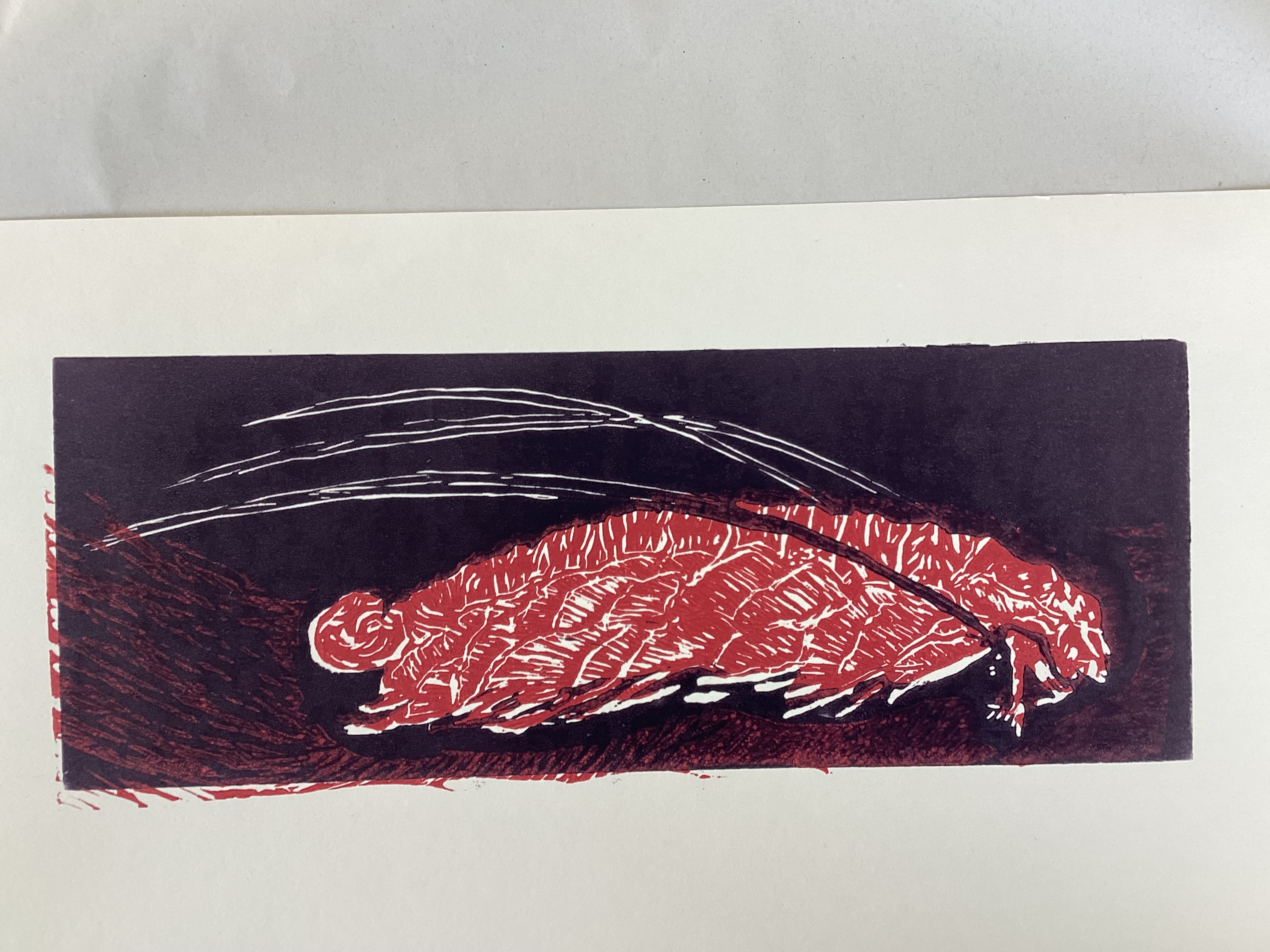

A final note
According to the BBC Sir David said: “The biggest compliment that a biologist or palaeontologist can pay … is to name a fossil in his honour and I take this as a very great compliment.”
You don’t say, Sir David… I’m still waiting on my species.
